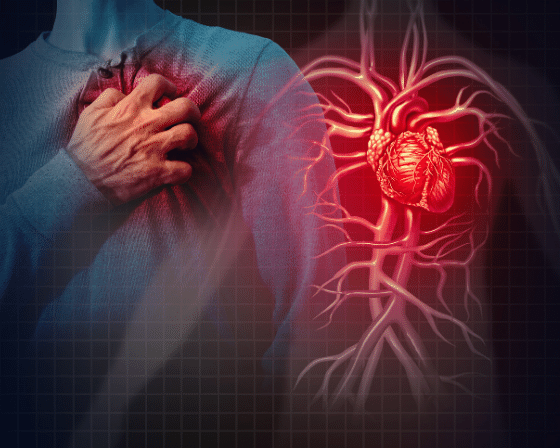UC IRVINE RESEARCHERS REVEAL STRUCTURE OF MOLECULE THAT REGULATES BLOOD PRESSURE
FINDING COULD OPEN DOOR TO NEW TREATMENTS OF CARDIOVASCULAR DISORDERS

Irvine, Calif., Dec. 22, 1998–UC Irvine researchers have determined the three-dimensional atomic structure of the chemically active area of an enzyme that makes a tiny molecule called nitric oxide. This molecule has received widespread attention for its critical role in regulating blood pressure, nervous system functions and the immune system. The finding could result in new treatments for cardiovascular disease, which kills more Americans annually than any other disorder.
Dr. Thomas Poulos, Huiying Li and C.S. Raman of UCI’s Department of Molecular Biology and Biochemistry report in the Dec. 23 edition of the journal Cell that they now know the exact structure of nitric oxide synthase, the enzyme that makes nitric oxide. Nitric oxide has become a major focus of scientists in the worldwide effort to combat heart disease. This year’s Nobel Prize for Medicine was awarded to three other researchers for their success in outlining the role played by nitric oxide in heart disease and a wide range of other diseases.
The enzyme nitric oxide synthase exists in three distinct chemical forms. One form helps the body fight off infections by aiding with an inflammation response, another assists nerve cell transmission within the brain and a third—the type studied by the UCI researchers—regulates blood pressure. Disease or accidents can disrupt the enzyme’s “fine-tuning,” making it produce too much nitric oxide. This disruption can cause high blood pressure (or sometimes dangerously low pressure), shock or other circulatory problems.
Poulos and his team isolated the chemically active area of endothelial nitric oxide synthase, which sits in a deep layer lining the blood vessels called the endothelium. This active area of the enzyme is responsible for regulating blood pressure by making minute amounts of nitric oxide. “Determining the structure of this enzyme is the next important step in researching how nitric oxide works in the body. From this point, we can find out how to manipulate the enzyme’s ability to change blood pressure,” said Poulos. In the future, drugs may be developed that can control blood pressure by controlling the enzyme’s ability to make nitric oxide. Similarly, new drugs combating the wide range of diseases in which nitric oxide plays a role can be developed once the remaining two enzyme structures are known.
Nitric oxide is a component of smog and is becoming familiar for the role it plays in the human body as a regulator of the flow of blood through veins and arteries.
In addition, the molecule has been found to be a major factor in an enormous range of physiological functions. For example, nitric oxide causes penile erections by dilating blood vessels. The anti-impotence drug Viagra works partly by exploiting nitric oxide. In addition, pregnant women suffering from sudden spikes in blood pressure (known as “preeclampsia”) could benefit from drugs that inhibit the enzyme, which causes the disorder. White blood cells in the body use nitric oxide to kill infectious agents such as bacteria, fungi and parasites, and even use the molecule to defend against cancerous tumors. In nearly all of these cases, the exact chemical structure of the enzyme making nitric oxide will provide a blueprint for researchers to design drugs or other treatments that will effectively treat these disorders with a minimum of side effects.
Researchers have been frustrated by past drug development efforts because of severe side effects of nitric oxide-inhibiting drugs. “Each of the enzyme’s three forms have a very specific role. Drugs that control the enzyme hit all three at once, causing severe side effects,” Poulos said. By isolating one structure at a time, the researchers can now design drugs that work exclusively on one enzymatic form by exploiting their unique structures, he said. Poulos and his researchers pinpointed the enzyme’s structure using a highly sophisticated technique called X-ray crystallography, in which sensors and computers read the way X-rays are reflected off crystallized enzymes. These differences in reflections are then analyzed to determine the structure of the enzyme, down to the last atom.
The researchers are now working on finding the forms of all three enzymes, which has the potential to create new techniques of combating disorders from impotence to shock to bacterial infections. “This is a promising new research area in the fight against hypertension and heart disease, and could result in a new group of pharmaceuticals to treat this problem in a more effective way,” Poulos said. “Later, when we know the structure of all three enzyme forms, it’s conceivably possible to create new treatments for any of these disorders.”
According to the American Heart Association, hypertension is the most often-cited reason for doctor visits. Cardiovascular disease kills nearly one million people every year in the United States.
Poulos’ group at UCI was assisted in this work by a research group headed by Dr. Bettie Sue Masters at the University of Texas Health Science Center, San Antonio.
Contact:
Andrew Porterfield
(949) 824-3969
amporter@uci.edu
